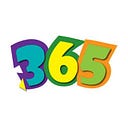We use them every day as we are bombarded with various words.
TIMES NEW ROMAN: Created by Stanley Morison and Victor Lardent in 1931 for the British newspaper, “The Times,” from where it derives its name. This font is known for its classic and timeless appearance, characterized by its narrow letter spacing, moderate stroke contrast, and serifs-those small decorative flourishes or extensions at the end of letter strokes. Its letters are relatively tall and have a regular, upright posture. Due to its readability and conservative design, Times New Roman is widely used in printed materials, such as books, newspapers, magazines, and academic documents.
BAUHAS 93: A distinctive font inspired by the Bauhaus design movement of the early 20th century. It was created by Alan Meeks and Max Miedinger in 1982, drawing inspiration from the geometric shapes and clean lines characteristic of Bauhaus art and architecture. This font is recognized for its modern and minimalist appearance, featuring bold, geometric letterforms with straight lines and minimal embellishments. It is commonly used in graphic design projects, posters, logos, and other creative endeavors where bold, modern typography is desired.
COMIC SANS: A casual and playful font designed by Vincent Connare in 1994 while he was working at Microsoft. It was originally created to mimic the style of comic book lettering, hence its name. Comic Sans is characterized by its rounded letterforms, irregular strokes, and a whimsical appearance. Unlike more formal fonts, Comic Sans lacks serifs and has a more relaxed and informal vibe.
COOPER BLACK: created by Oswald Bruce Cooper in 1922. As an American typeface designer, Cooper crafted this font to be bold, distinctive, and highly readable. Cooper Black is characterized by its thick and rounded letterforms, which exude a sense of warmth and friendliness. Unlike some other serif fonts, Cooper Black features relatively large and prominent serifs, making it stand out when used in headlines or titles.
STENCIL: An unique and recognizable font that was created to mimic the appearance of lettering stenciled onto surfaces. Its origins trace back to the practical need for easily replicable text in various military and industrial applications. Stencil fonts typically feature letterforms with breaks or gaps in the strokes, resembling the effect of letters cut out of a template.
ARIAL: Designed by Robin Nicholas and Patricia Saunders in 1982 for the Microsoft Corporation. It was created to serve as a versatile and easily readable typeface for various digital and print applications. It is classified as a sans-serif font; its letterforms are simple and straightforward, with uniform stroke widths and clean lines. It is well known for its modern and neutral appearance, making it suitable for a wide range of uses.
JOKERMAN: playful and distinctive font designed by British designer Andrew K. Smith in 1995. It was created to evoke a sense of whimsy and fun, with letterforms that feature exaggerated strokes and quirky embellishments. Jokerman is known for its irregular and hand-drawn appearance, resembling calligraphy or graffiti.
COPPERPLATE GOTHIC: A classic and elegant font that was first created in the late 19th century by Frederic W. Goudy, an American typeface designer known for his many contributions to typography. Copperplate Gothic is characterized by its clean and geometric letterforms, featuring thick, evenly weighted strokes and minimal embellishments.
OLD ENGLISH TEXT MT: A distinctive font designed to evoke the style of medieval calligraphy and illuminated manuscripts. It was created by the English typeface designer, Monotype Corporation, in 1901, inspired by the ornate letterforms of historical manuscripts from the Middle Ages. Old English Text MT is characterized by its elaborate and decorative letterforms, featuring intricate flourishes, sharp angles, and dramatic contrasts between thick and thin strokes.
PAPYRUS: A distinctive font designed by Chris Costello in 1982. Inspired by the appearance of ancient papyrus scrolls, the font was created to evoke a sense of rusticity and antiquity. Papyrus is characterized by its irregular and hand-drawn letterforms, which feature rough edges and varying stroke widths, resembling the texture of weathered paper.
VIVALDI: Flowing font designed by Friedrich Peter in 1976. Named after the famous Baroque composer Antonio Vivaldi, this font was created to evoke a sense of grace and sophistication. Vivaldi is characterized by its delicate and ornate letterforms, which feature dramatic flourishes and intricate details reminiscent of calligraphy.
COURIER NEW: Widely-used monospaced font designed by Howard Kettler for IBM in 1955. It was created to resemble the typewriter text of the time, making it easy to read and ideal for documents requiring a fixed-width appearance. Courier New is characterized by its uniform spacing between characters, with each letter occupying the same amount of horizontal space, giving it a mechanical and uniform appearance.
For Private & Customized Holidays: www.365tours.in
